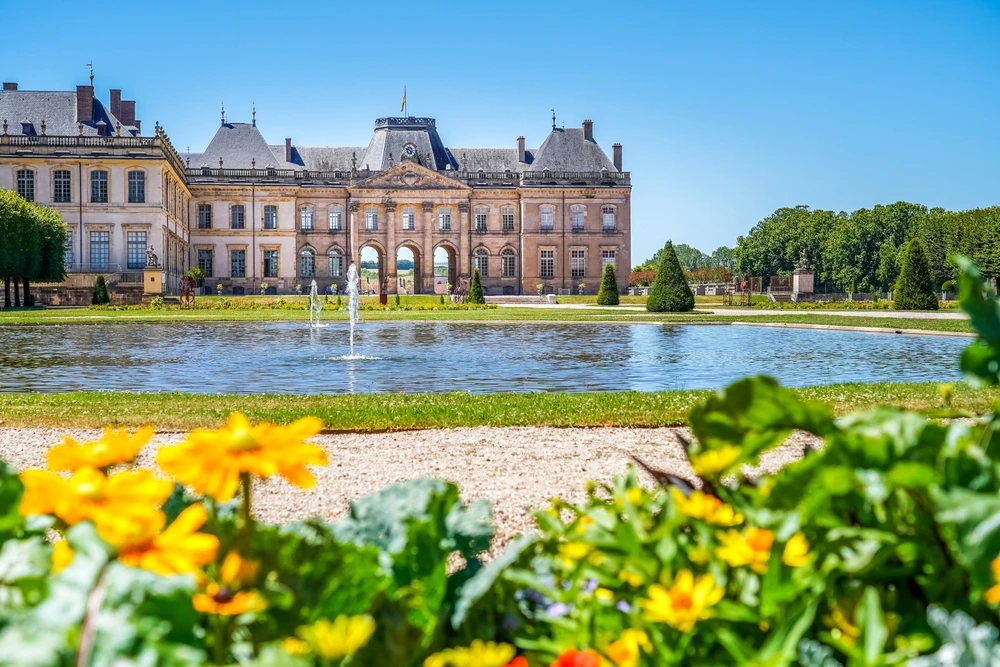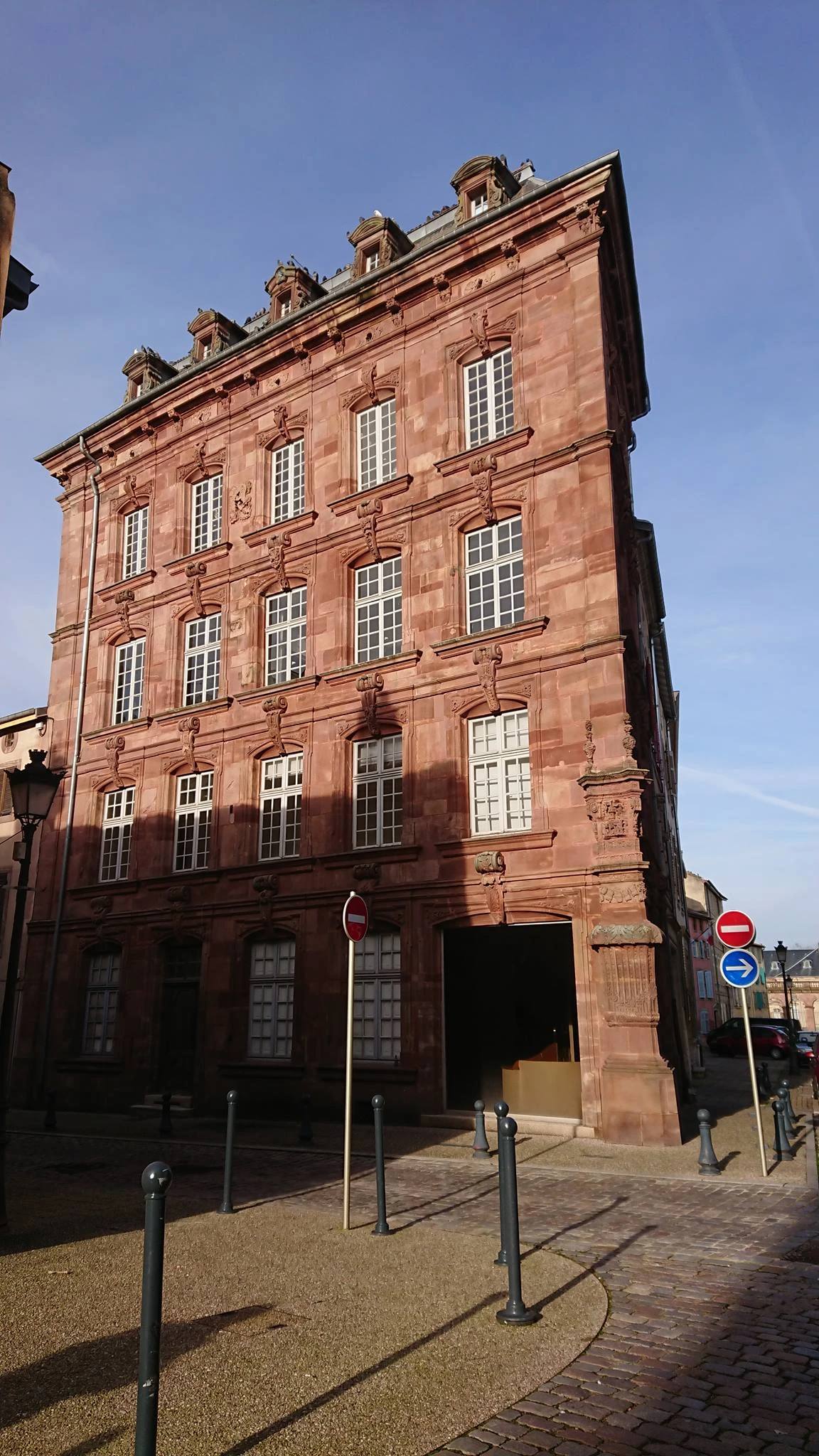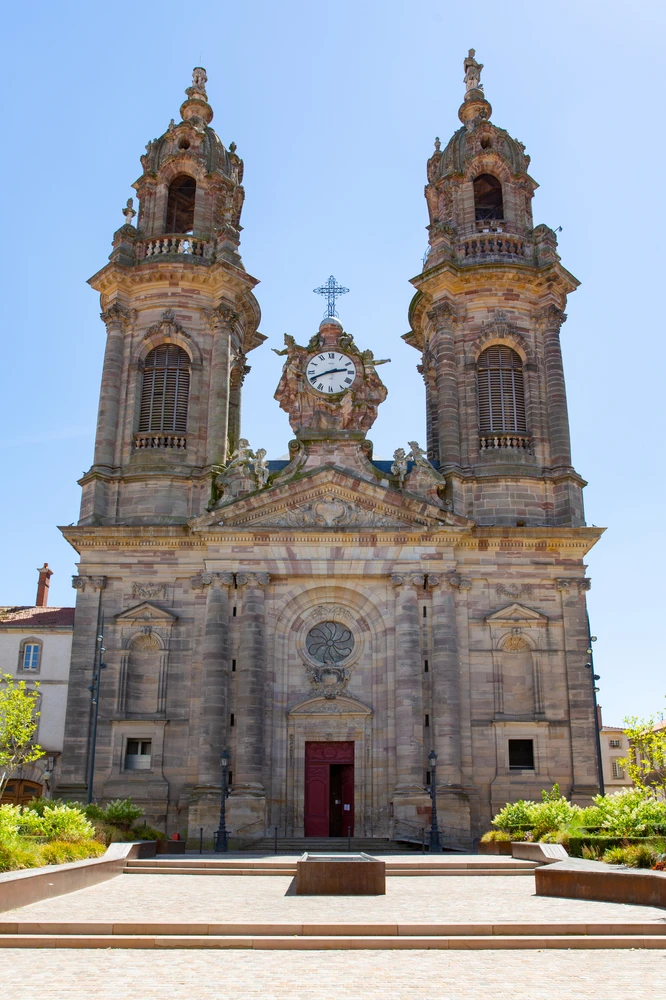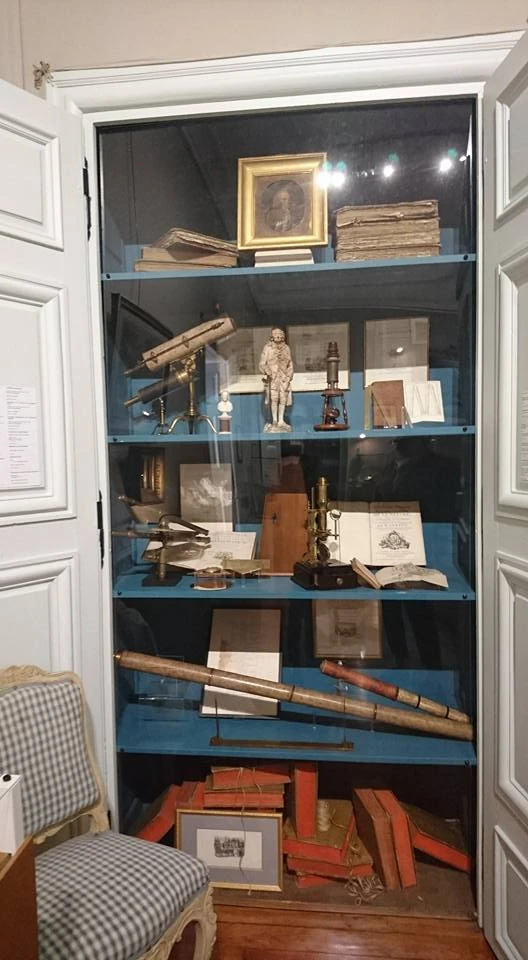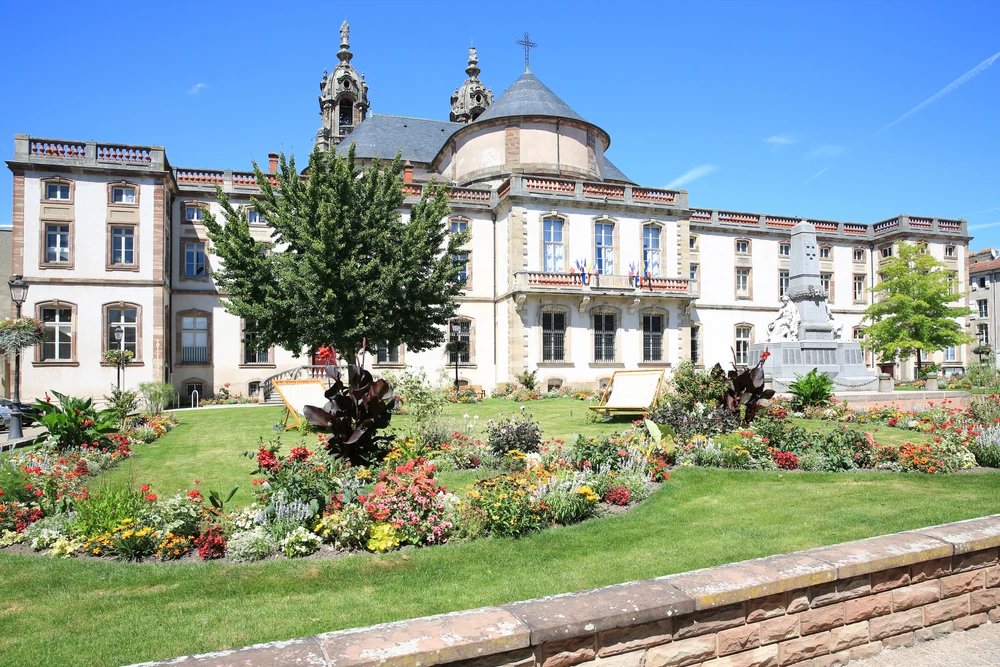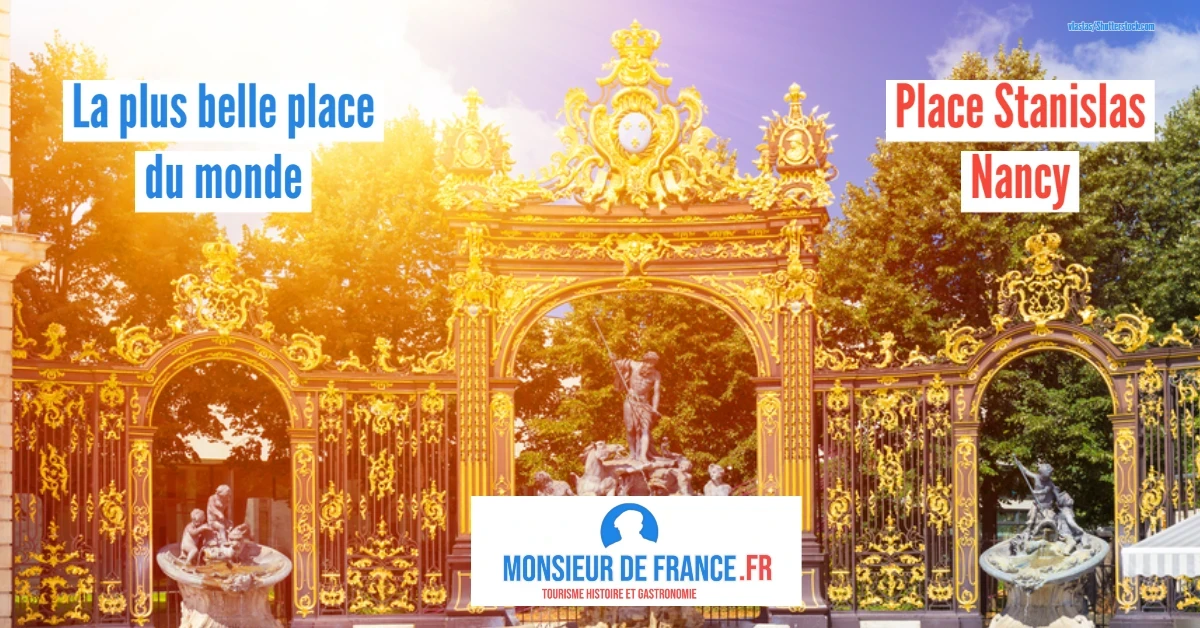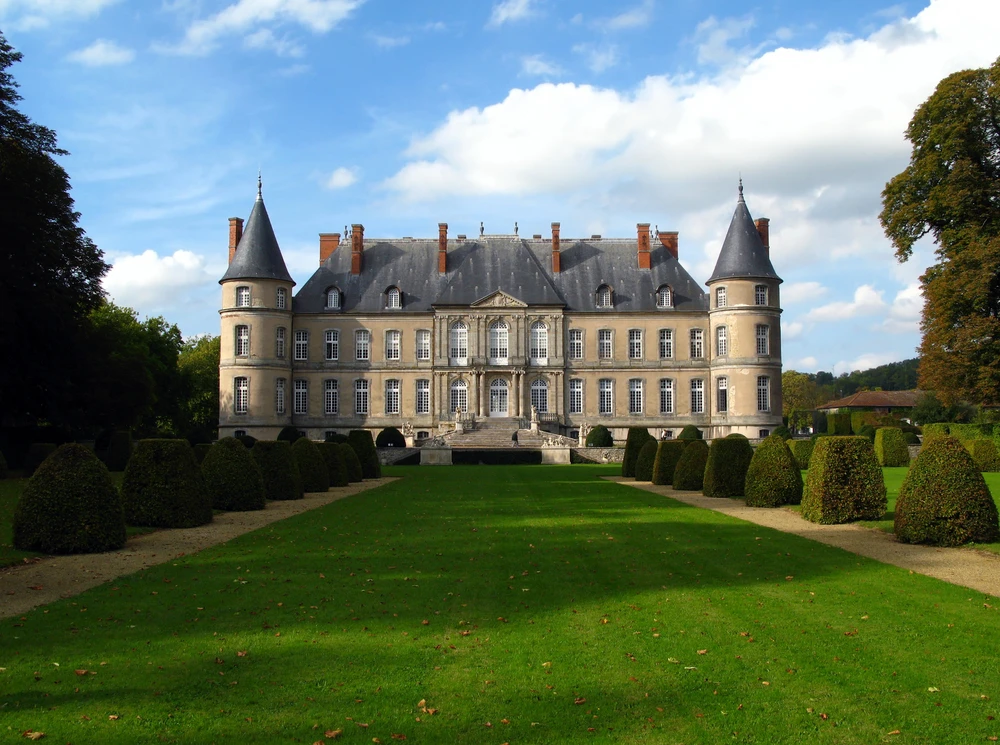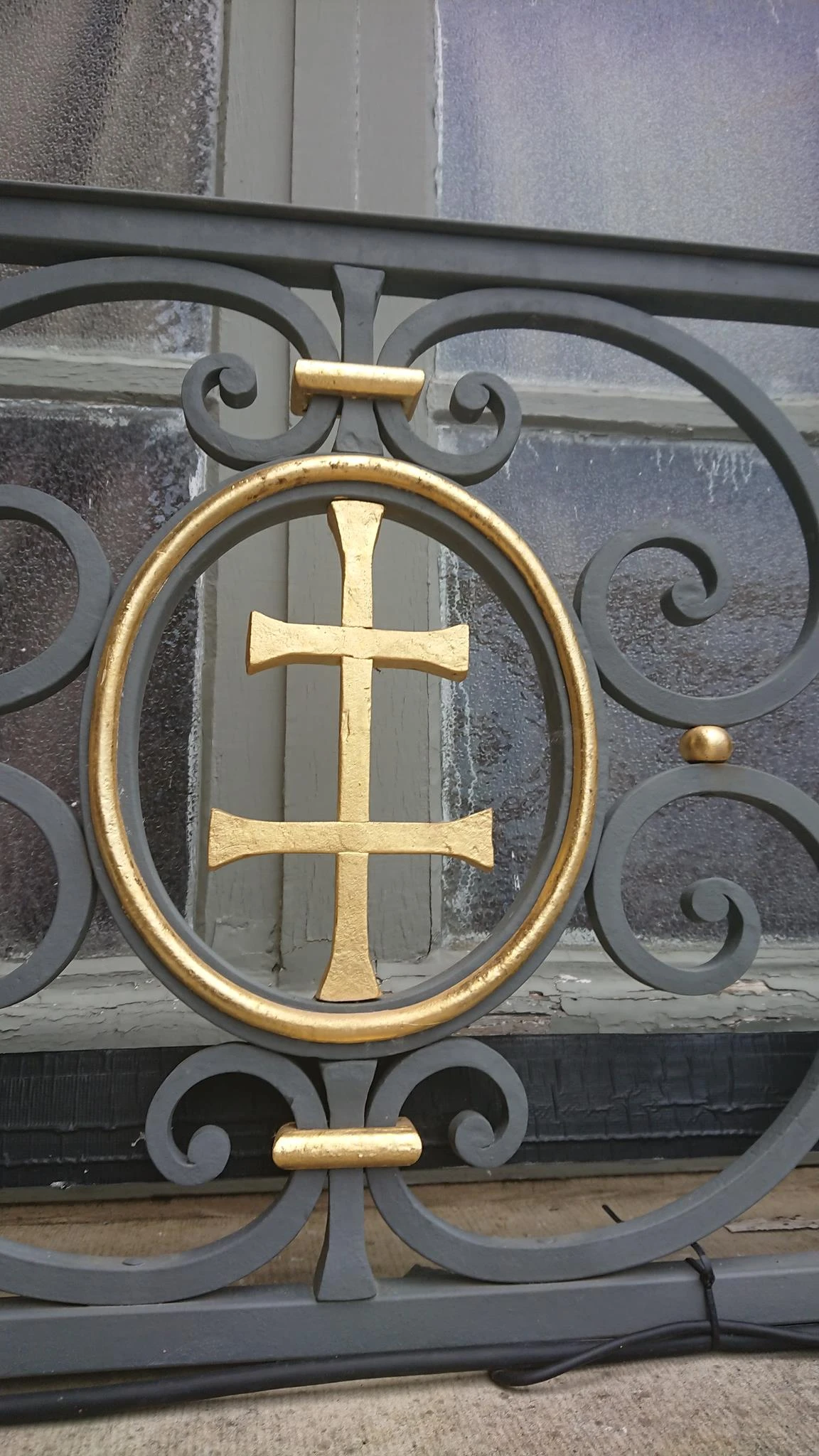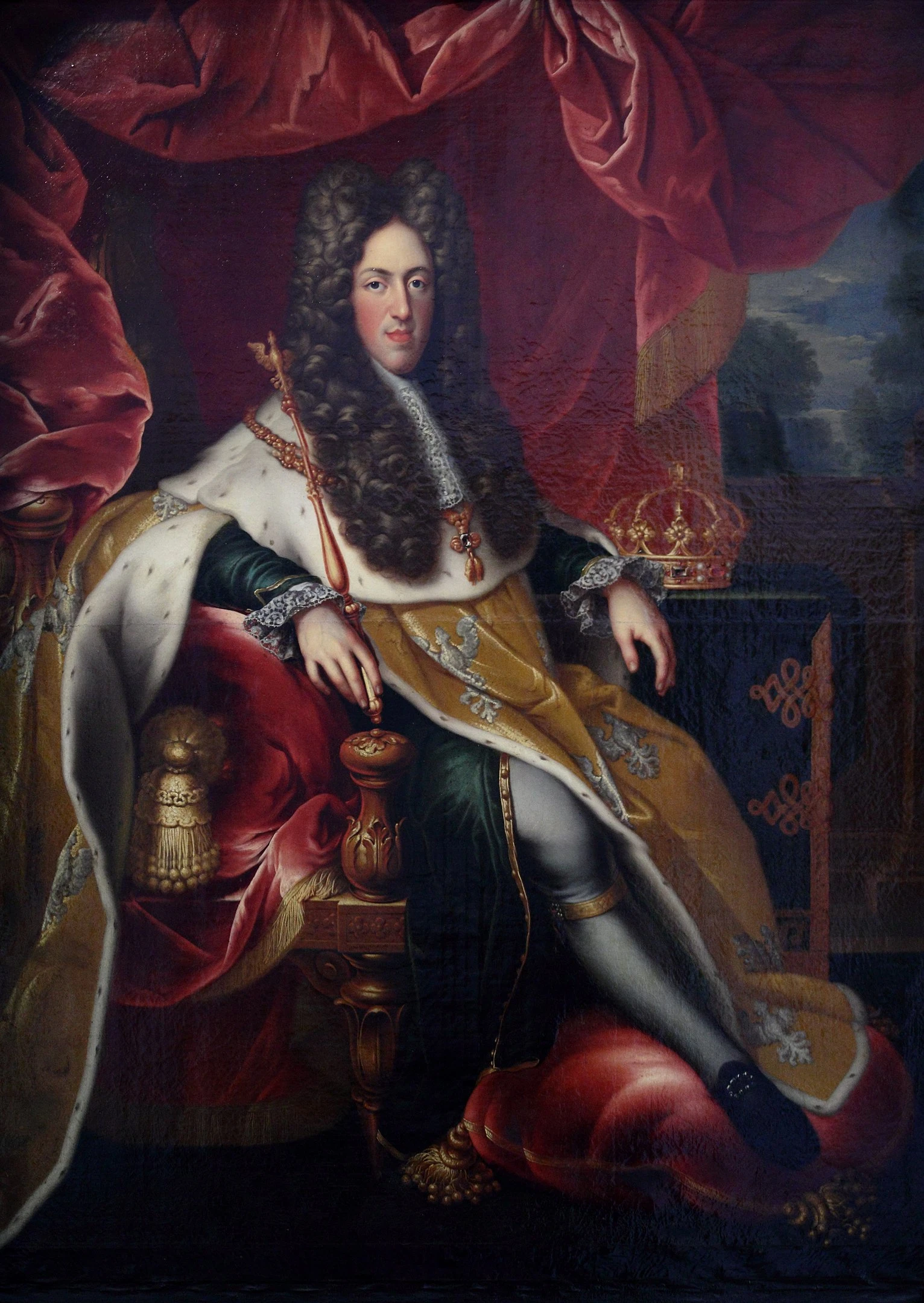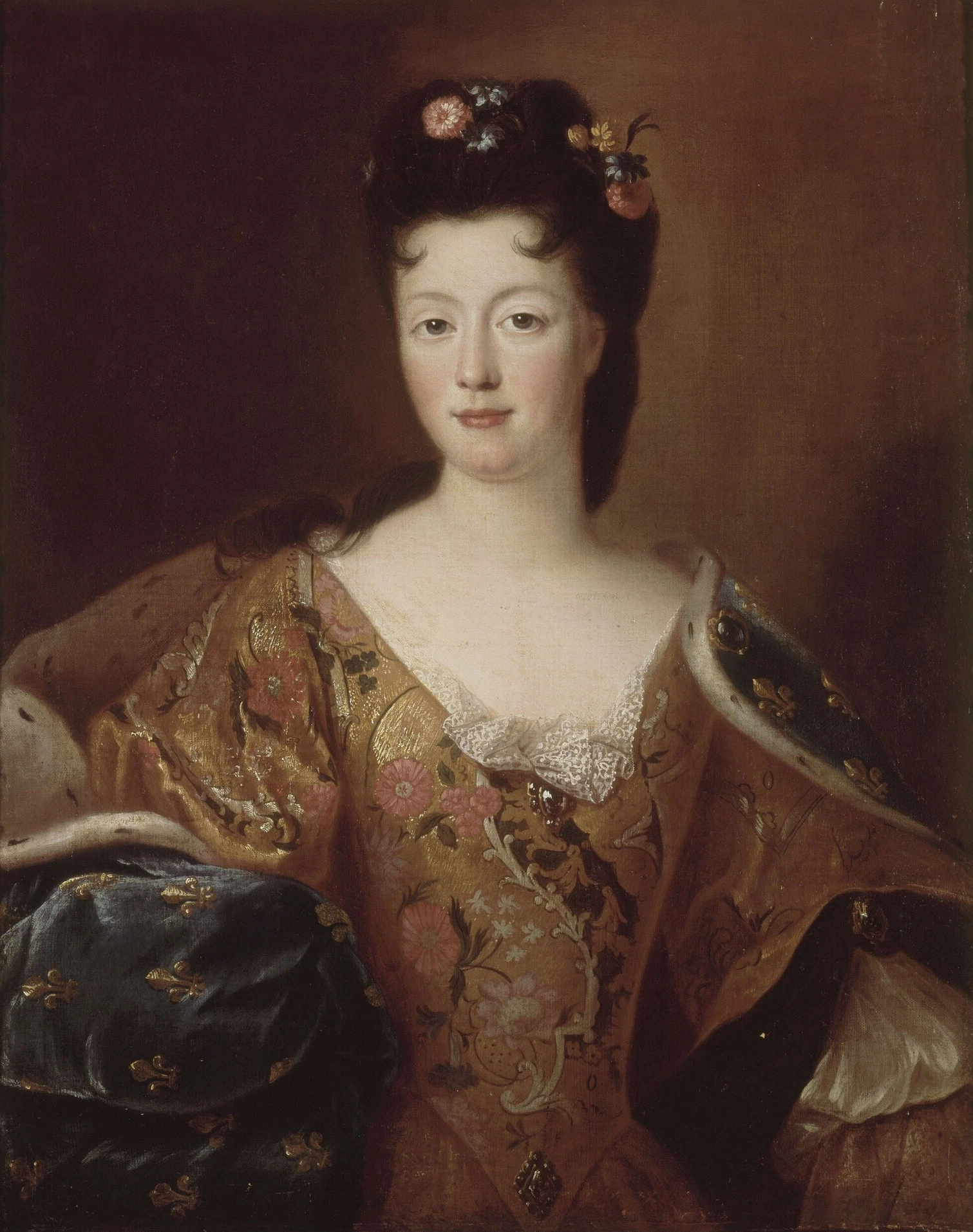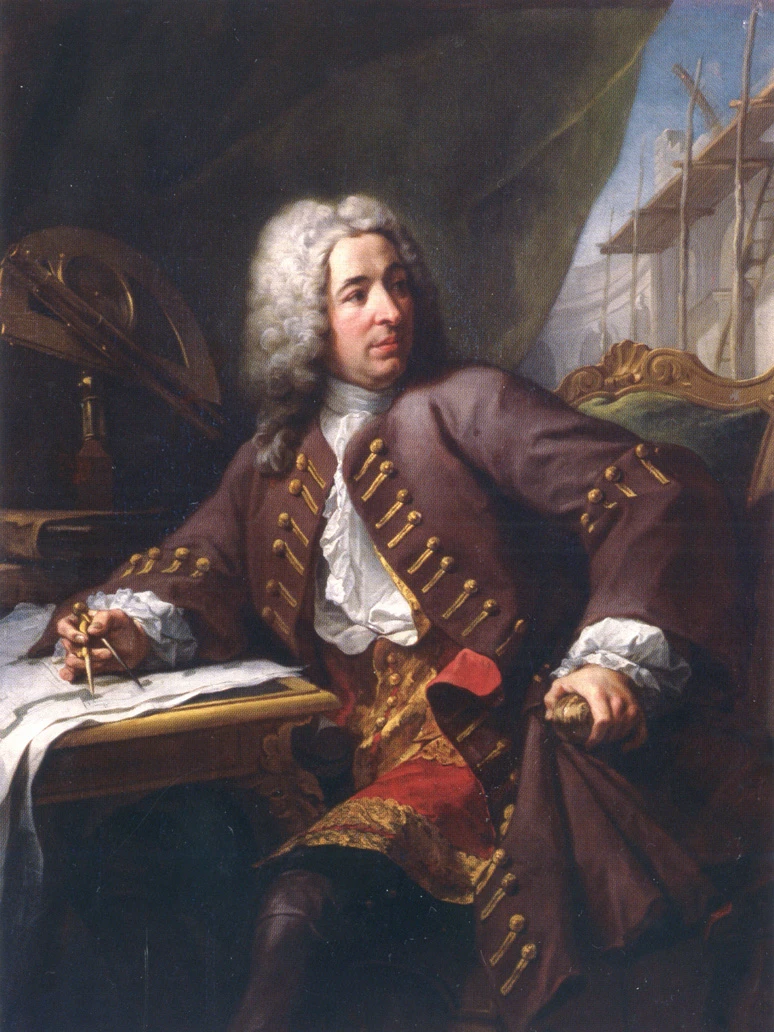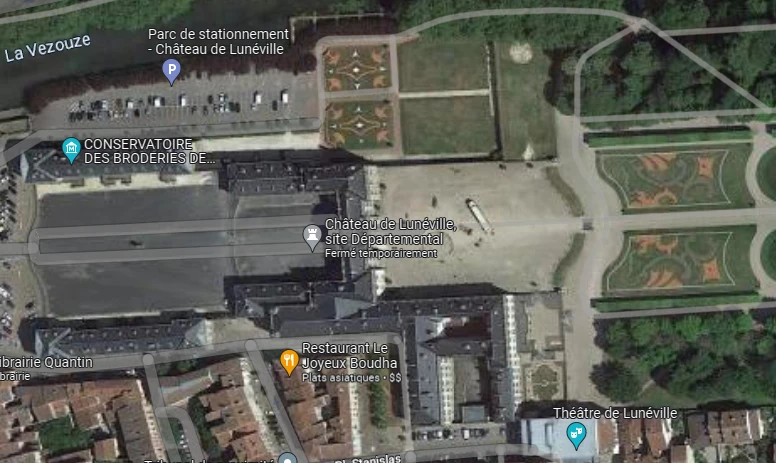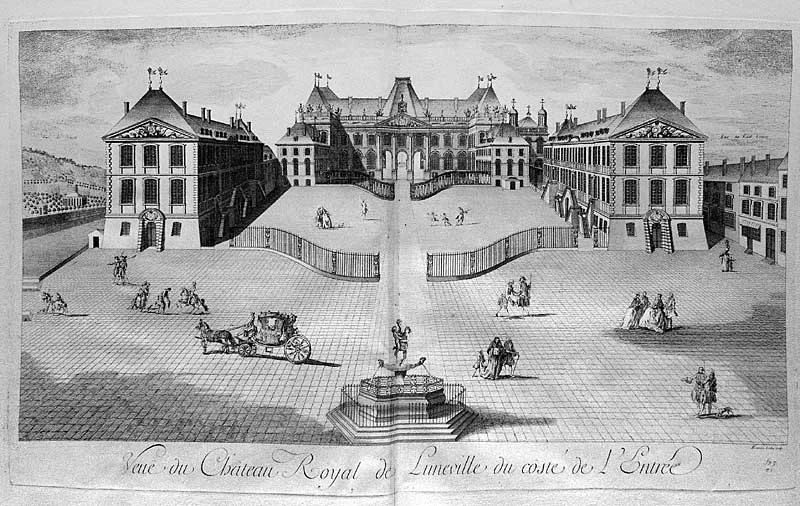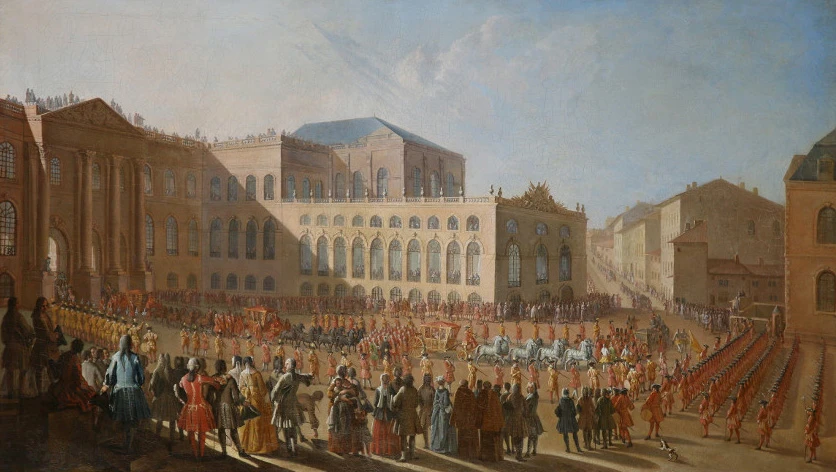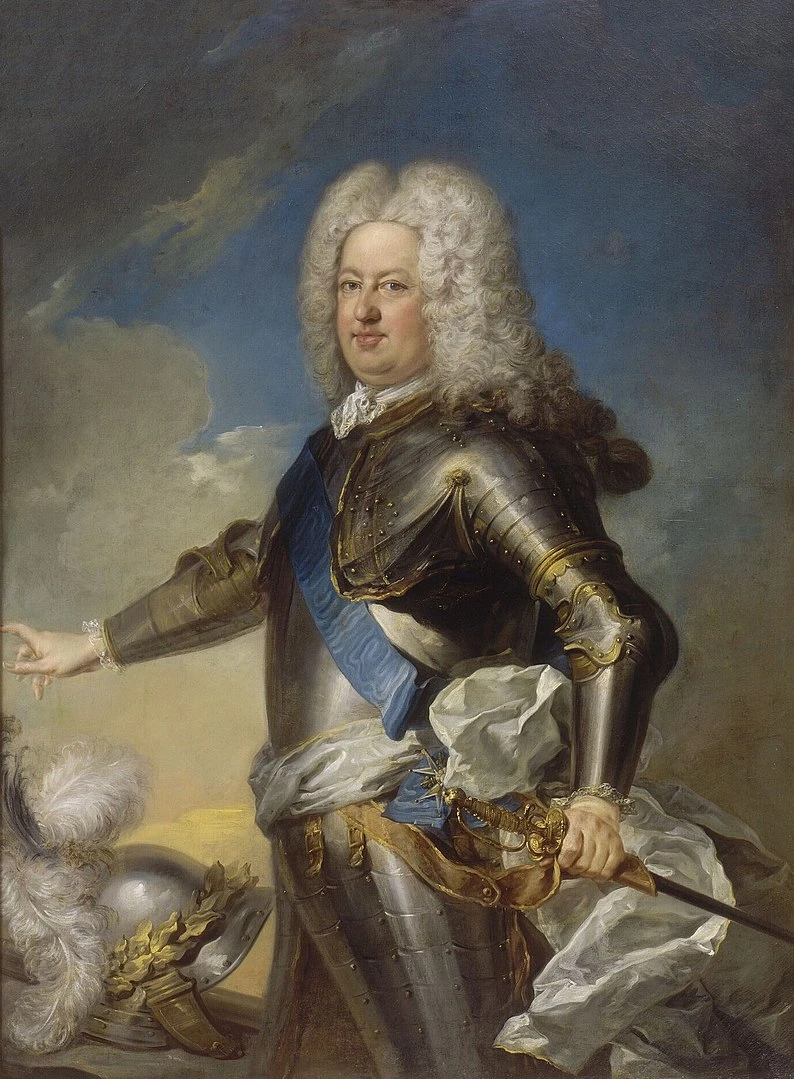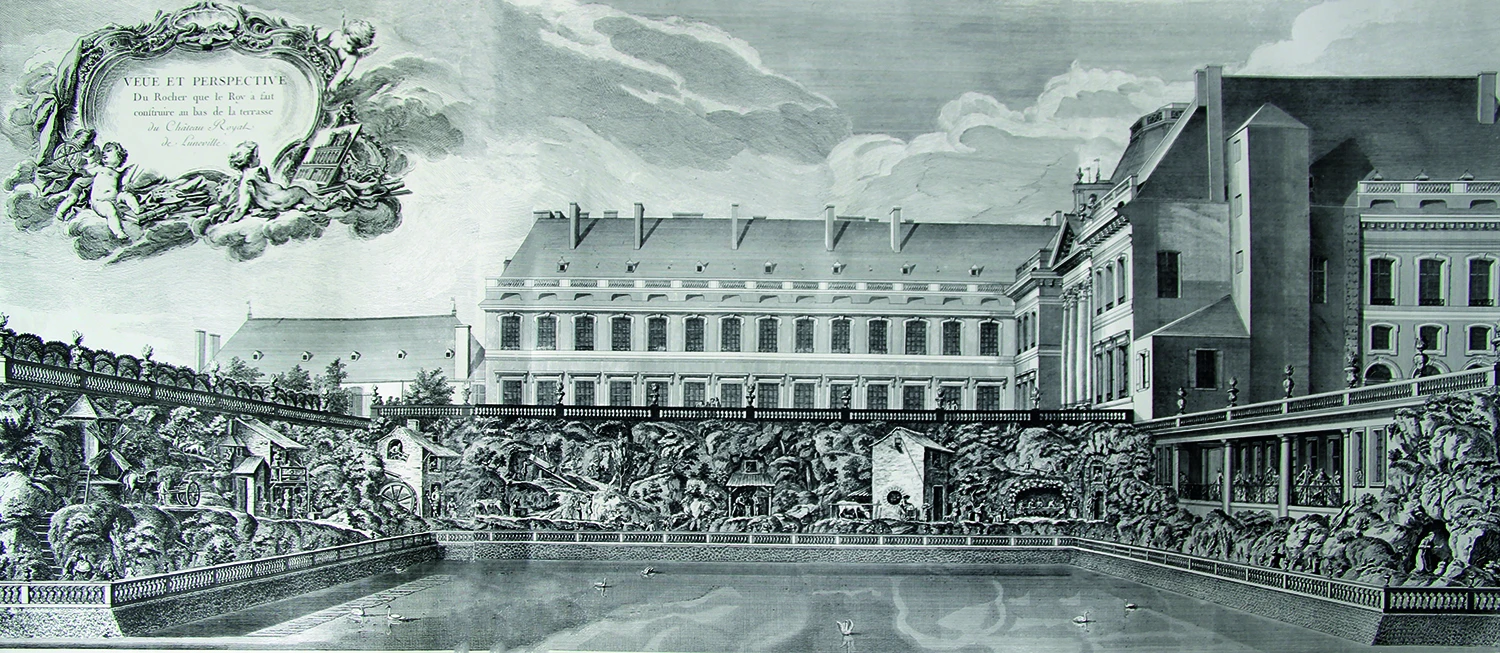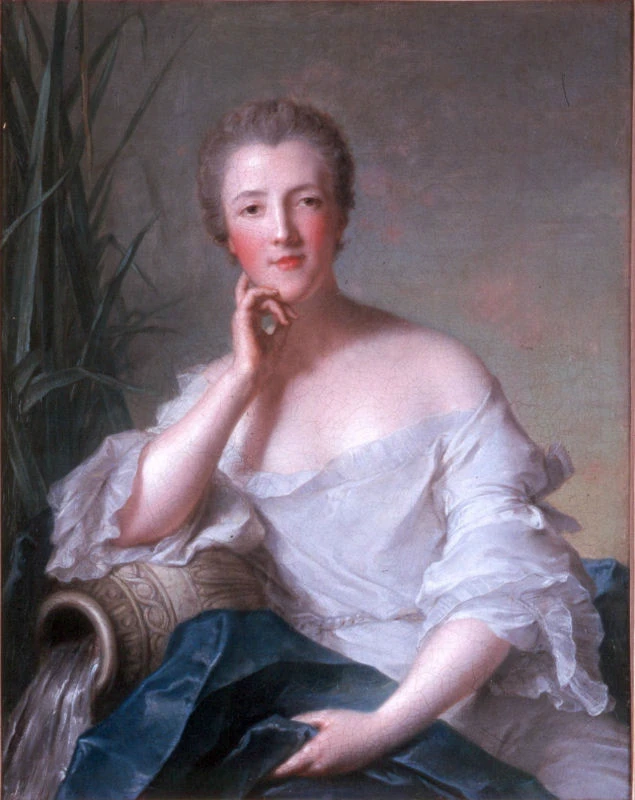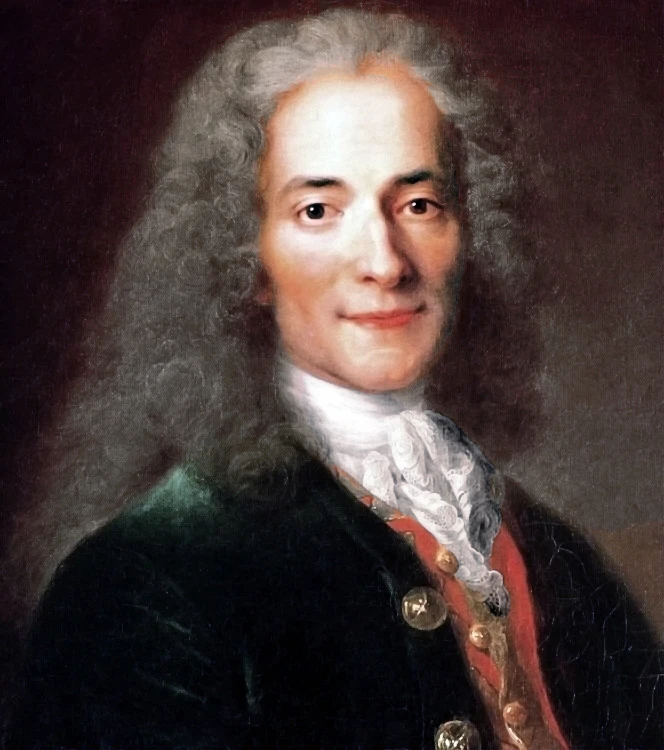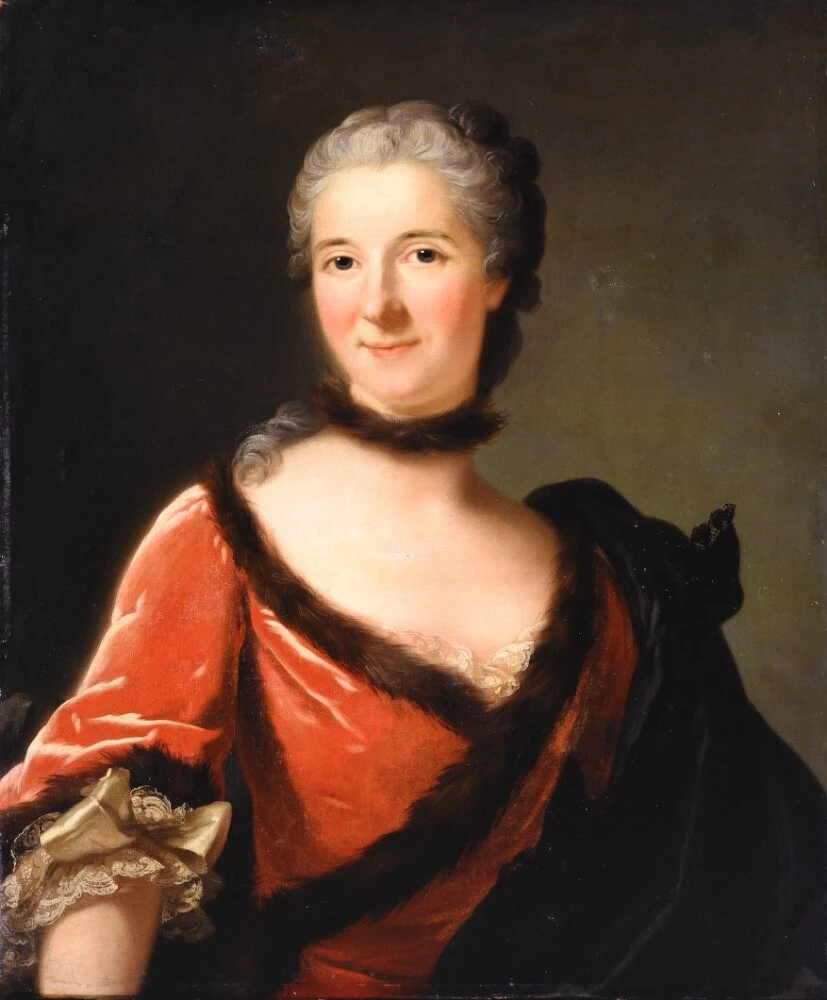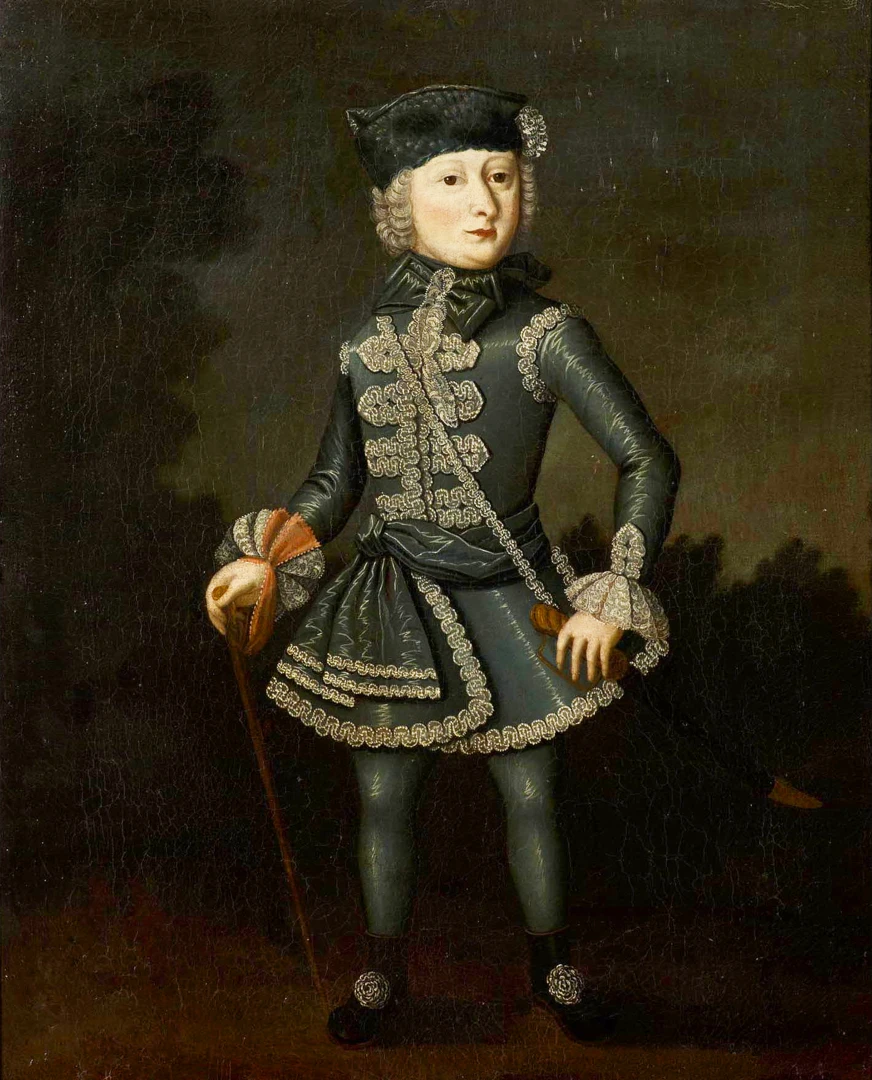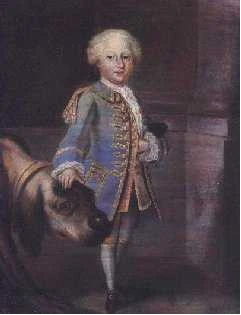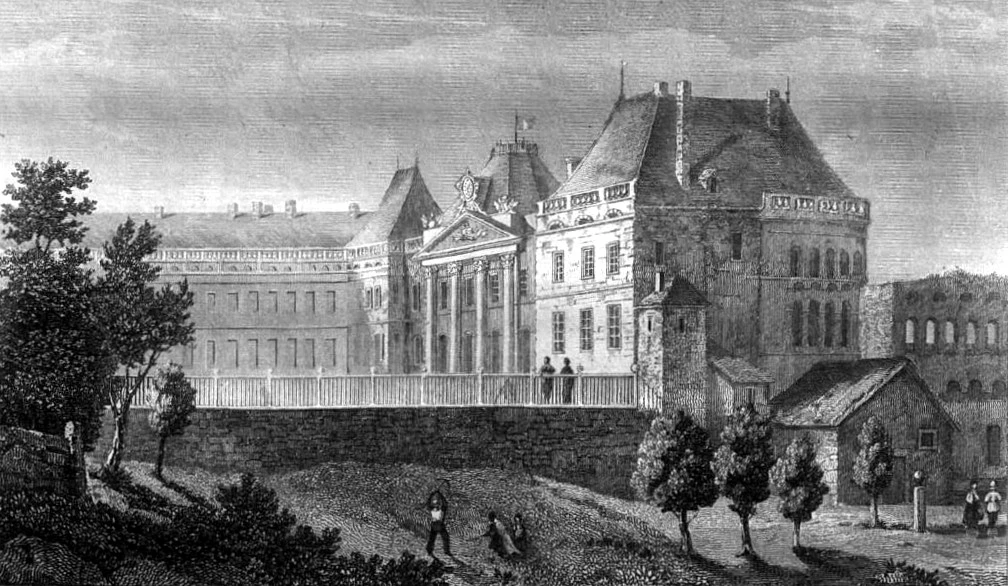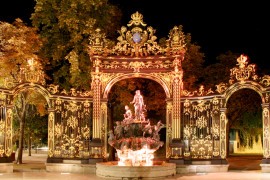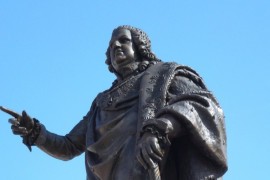A city rich in heritage
The castle of Lunéville
Nicknamed the Versailles of Lorraine, it was built at the beginning of the 18th century by the will of Leopold I of Lorraine and Bar, according to plans signed by Germain Boffrand, an architect from Nantes, a student of Jules Hardouin-Mansart. The castle was the victim of a terrible fire that destroyed a large part of it in 2003. Since then it has been undergoing renovation. It was the largest reconstruction site in Europe. The roofs and facades are finished. There is still a lot to do, but it is really worth the detour.
The castle of Lunéville seen from the gardens / Photo chosen by Monsieurdefrance.com : Shutterstock. com
You can get there either from the "cour des communs" by passing the two buildings that form the "communs". Sometimes there are exhibitions inside the left common and in the right common there is the "conservatoire des broderies de Lunéville", a place that teaches and shows clothes made with this lace stitch absolutely unique in the world. It consists of beaded elements that are embroidered with the fabric. A technique that is still very much in demand in the French Haute-Couture. Continuing we pass the statue of General La Salle (1775-1809). Born in Metz, he died at the Battle of Wagram and was considered the essence of the French Cavalry officer. In 1893, the Lunéville Cavalry Regiment, stationed at the castle, had this statue erected. Finally we arrive at the courtyard of honor. The entrance to the castle is on the right. You can visit 3 rooms: the "Salle de la Livrée" (the reception), the chapel and the crypt. By passing the peristyle (the porch if you prefer) you can access the park of the castle, called "park of the groves". Monsieur de France tells you the history of the castle of Lunéville at the end of this page. Don't miss it, it is fascinating.
Location: Place de la 2e division de Cavalerie / 54 300 Lunéville.
The merchant's house
Amazing house made of pink sandstone from the Vosges. It is located between the castle and the church of Saint Jacques. It was built in the 18th century for a merchant who worked with products from all over the world, as the facade reminds us, which displays not only barrels, but also an Indian head with feathers or a minaret.
Location : 3 rue du château in Lunéville.
The pink sandstone façade of the merchant's house in Lunéville / photo chosen by Monsieurdefrance.com: Jérôme Prod'homme
The church of Saint Jacques de Lunéville
Typically baroque the church of Saint Jacques, within the abbey of Saint Remi. Photo chosen by Monsieurdefrance.com: Traveller70/Shutterstock. com
It is the large church located on the right side of the castle and can be seen from afar, especially when arriving from the road to Nancy, with its two large bell towers made of pink Vosges sandstone. It is due to the will of Duke Leopold I, the first stone having been laid in 1730 by his son François III (who became emperor under the name of François I). It was designed by Jean Nicolas Jennesson(to whom we also owe the beautiful church of Saint Sebastian in Nancy). Remodeled inside by Emmanuel Héré (architect of the Place Stanislas in Nancy), it displays an amazing hidden organ.
The astonishing hidden organ of the church of Saint Jacques in Lunéville with its putti musicians. Photo chosen by Monsieurdefrance.com : Jérôme Prod'homme
In fact, the columns surrounding the case are made of the organ pipes painted in fake marble. Putti musicians, including an amusing conductor, seem to be playing music. At the entrance, under a black slab, lies the marquise Emilie du Chatelet, the first female mathematician in French history and the love of Voltaire's life.
Location : esplanade Saint Jacques in Lunéville.
The abbey palace
One of the scenes to be seen at the abbey hotel in Lunéville / Photo chosen by Monsieurdefrance.com: Jérôme Prod'homme.
Located next to the Church (on the right) it is a very original place since it is a museum space. It was the residence of the abbot of Saint Rémi, the great abbey of Lunévilloise, in which today is located both the town hall and the church of Saint Jacques. It has become a place where an aristocratic dwelling of the middle of the Age of Enlightenment has been recreated. The amazing thing about this place is that everything is new, especially the paintings, but the objects are old. An ingenious and delicate staging gives the impression that we are literally in 1750 and that the owner of the place has left for a few moments and will return. To see in particular the table prepared in the French way in the large lounge and the temporary exhibitions always enthralling.
Location : esplanade Saint Jacques in Lunéville.
The synagogue
It is one of the oldest in France. It was built in 1786 with the authorization of King Louis XVI. The sandstone facade is very pretty.
Location : 5 rue Castara in Lunéville.
And streets full of private mansions
The city was designed by Germain Boffrand, the architect of the castle. Rue Banaudon (the very commercial street), rue de la République and in all the city center there are many private mansions of which the House of the treaty where a peace treaty between France and Austria was signed in 1801. Also worth seeing is the neo-gothic Jeanne d'Arc church, the theater, the elegant Leopold square...
The Saint Remi abbey, whose foundations are more than 1000 years old, and in which the town hall of Lunéville is now located.
Around Lunéville
Baccarat, the Vosges...
Around Lunéville, you can discover many places. For example, less than 20 minutes away, you can visit the Maison de la Mirabelle in Rozelieures which allows you to discover the mirabelle plum, the fruit of Lorraine par excellence. You can also buy a lot of products made from mirabelle plums, alcohol for example, but also perfume and even shampoo. You can also discover the park of the Château de Gerbéviller, with its centuries-old trees, on weekends in fine weather. Baccarat, and its famous crystal factories are also 20 minutes away. The Lunévillois (the area around Lunéville) lends itself deliciously to cool hiking or biking.
A little further on, the Vosges department begins. You are at 1H00 from the mountains.
Nancy
Nancy is very close to Lunéville. You can discover the XVIIIth century ensemble classified as World Heritage by UNESCO in 1983. It is also a fascinating city if you like Art Nouveau. All the information is below.
Right next to Nancy, you can visit Nancy, its famous Place Stanislas, but also the Art Nouveau monuments...
The castle of Haroué
It isone of the works of Boffrand, the architect of the castle of Lunéville. Built between 1720 and 1729 for one of the regulars of the Court of Lunéville, Marc de Beauvau-Craon (best friend of Duke Leopold), the castle was built on the site of a medieval fortress, which explains the round towers that give it so much charm. A castle to see absolutely. You will discover magnificent reception rooms (with rare tapestries from Nancy), the delightful "Pillement" room, named after the painter who created delicate and amusing chinoiseries there. Some people call the house "the Palace in the country" or "the Chambord of Lorraine". It must be said that it is imposing with its "4 bridges, 12 towers and turrets, 52 chimneys and 365 windows". The Beauvau-Craon family still owns the place which is now managed by the Centre des Monuments Nationaux.
More information on the website of the castle of Haroué and on site: place du château, 54 740 Haroué.
Le château de Haroué : un palais à la Campagne / Photo choisie par Monsieurdefrance.Fr : Mihai-Bogdan Lazar/Shutterstock
A history of the castle of Lunéville
View on the castle of Lunéville from the Court of honor. At the top: the flag of Lorraine, emblem of the dukes of Lorraine with the three silver alerions / Photo chosen by Monsieurdefrance.com: Traveller70/shutterstock.com
The Versailles of Lorraine
It is the "Versailles of Lorraine" for two reasons: it is enormous and it was built a few kilometers from the official capital of the sovereign. But the comparison stops there. First of all, the castle and its symbols do not revolve around a man, as is the case with Louis XIV in Versailles. Here, the sovereign's room is far from being the center of the residence since it was located in the "ducal apartments", the place where the duke lived. And then, the castle is in the image of the people of Lorraine: modest. Don't look here for kilos of gilding. First of all, the Duke of Lorraine was not as wealthy as the King of France, of course, but he was also an enemy of glitter. The rare gilding serves to underline one of the symbols of the dukes: the cross of Lorraine, which can be found on the balconies.
Lunéville is immense but modest. Do not look for the gilding of Versailles. The gold leaf is not for the sovereign, but for Lorraine, which can be seen in the golden crosses on the balconies. Photo chosen by Monsieurdefrance.com / Jérôme Prod'homme
The origin of the castle of Lunéville
Lunéville has very ancient origins. So much so that in some grimoires it is stated that the place was a place of worship to the Moon goddess in the time of the Gauls. The place was fortified quite early, by the counts of Lunéville, it became Lorraine by the duke of Lorraine Mathieu II in 1243. Between 1620 and 1630, the old medieval castle was destroyed and replaced by a new one by the will of Duke Henri II of Lorraine and Bar (1563-1624). Very damaged by the 30 years war and deserted by the dukes obliged to flee their states occupied by the France of Richelieu and Mazarin, the castle of Henri II is destroyed in its turn. In its place, Duke Leopold I of Lorraine and Bar decided to build his residence.
The return of the Duke of Lorraine
Duke Leopold I "the good" of Lorraine and Bar at the age of 25 by Nicolas Dupuy. He is represented with the attributes of the sovereignty of his duchy his coat is lined with ermine (for sovereignty), crossed with alerions (symbols of Lorraine), the ducal crown placed near him is said to be "closed" which reminds us that there is nobody above him.
Leopold I of Lorraine and Bar was born in Innsbruck, Austria, as the Dukes of Lorraine were driven out by the French of Louis XIII and Louis XIV in the 17th century. The reverses of fortune of Louis XIV finally forced him to accept the independence of the Duchy of Lorraine and the return of its hereditary holder this young 19 year old duke. With the Treaty of Ryswick, in 1697, Leopold regained possession of his duchies. He married the niece of Louis XIV, daughter of his brother "Monsieur", Elisabeth-Charlotte d'Orléans. The ducal couple entered a jubilant duchy and settled in Nancy, the capital. After 60 years of conflicts, a terrible plague epidemic and a 17th century that literally emptied it of its inhabitants, Lorraine finally saw the end of the tunnel. It was rebuilt and, thanks to Leopold, the duchies of Lorraine and Bar began a period that would be one of the most glorious in their history: the 17th century .
The Duchess Elisabeth Charlotte of Orleans.
And the idea of settling in Lunéville.
Leopold liked Lunéville. He even undertook to renovate the Renaissance castle of his predecessor Henry II. He decided to settle in Lunéville when French soldiers returned to Lorraine in 1702 during the War of the Spanish Succession. Nancy, the capital, became the place where French troops were stationed on their way to war. And Leopold refused to live in a place occupied by a foreign power. He chose to settle in Lunéville and to build his home there, that of a sovereign prince.
The castle of Germain Boffrand
Presumed portrait of Germain Boffrand, architect of the castle of Lunéville by Jean II Restout
The Duke called upon Germain Boffrand (1667-1754). Originally from Nantes, the man was already known for his collaboration with Jules Hardouin-Mansart(who designed the Grand Trianon and the Place Vendôme). We will count up to 6 different projects (like what, if you make build, you are not the only ones to change opinion often!). The initial idea was an H-shaped plan with two large wings. The Duke's finances will get the better of the second wing. Finances did not allow for the construction of a chapel with marble columns, as in Versailles. Germain Boffrand had a brilliant idea: pink sandstone columns, whitewashed and a sculpted plaster ceiling that was both simple and graceful. The gardens were designed by Yves des Hours and completed in 1710.
Aerial view of the castle of Lunéville and the Bosquets park. The unfinished H shape is clearly visible. Before the castle, two elongated buildings: the outbuildings, the castle above, and then the Bosquets park. Image chosen by Monsieurdefrance.com : aerial view by google earth
The castle is preceded by two large buildings(the commons) for the kitchens, the horses, and the servants. The right wing of the castle, a square around a small interior garden, constitutes "the ducal apartments" in which the duke and duchess come to both their representative work and their family life. A simple life, moreover, outside the official moments. There are many descriptions that tell us about the apartments as a very lively and joyful place. In the fireplaces of their rooms, the numerous ducal children (the couple had 14 children) played, studied and raised birds. The duchess did not disdain to cook in her room, especially her specialty: carp in a pan. In the castle one meets the Duchess Elisabeth-Charlotte, daughter of the Palatine and Monsieur, brother of King Louis XIV, the Duke Leopold and his mistress Anne Marguerite de Ligniville, wife of the Duke's best friend Marc de Beauvau-Craon, whom the Duke showered with blessings to thank him for not being too particular about his wife's love affairs.As a sort of family tradition, the daughter of the Beauvau-Craons will be in turn mistress of the sovereign of the castle, but not Leopold. We will talk about it again here... At the very beginning of his story, the castle is hit by a fire so violent that the children are evacuated to the courtyard where everyone is waiting in their nightgowns.
The castle of Lunéville in the Age of Enlightenment.
En 1729, la mort de Léopold, bâtisseur du château, interrompt les travaux. Son fils, François III de Lorraine et de Bar (1708-1765), vit à Vienne. Pour pouvoir épouser Marie-Thérèse d'Autriche (1717-1780) qui deviendra impératrice d'Autriche et pour devenir Empereur du Saint Empire Romain Germanique sous le nom de François 1er, le jeune duc accepte de faire un échange avec la France, qui lui refuse ce mariage parce qu'elle considère que si la Lorraine devenait Autrichienne, ce serait un pistolet autrichien braqué en permanence sur elle. Cet échange diplomatique est le suivant : la France accepte le mariage de l'héritier des ducs de Lorraine avec l'héritière de l'Empire d'Autriche. Il devient Grand-Duc de Toscane, à la place du dernier des Medicis qui vient de mourir. En échange, en 1737, François accepte de donner les duchés de Lorraine et de Bar à titre viager à Stanislas Leszczynski (1677-1766), ex-roi de Pologne, beau-père du roi de France Louis XV. Il est convenu qu'à la mort de Stanislas, la Lorraine sera unie à la France. Ce sera effectivement à la mort de Stanislas, en 1766, après un règne de près de 30 ans...
Mariage de Beauvau en 1721 au Château de Lunéville par Claude Jacquard (Musée Lorrain à Nancy).
Quand Stanislas déboule en Lorraine.
Stanislas Leszczynski (1677-1766) king of Poland, duke of Lorraine and Bar for life. Portrait chosen by Monsieurdefrance.com: Jean Baptiste Van Loo (Château de Versailles).
Stanislas was twice king of Poland, and twice chased from the throne by the Russians and the Saxons. He married his only daughter, Marie, to Louis XV and was entrusted with Lorraine for life. He had no power. The power, and the control of the Lorrainers, were entrusted to a chancellor: Antoire Martin Chaumont de la Galaizière (1687-1783). Stanislas did not reign, but he was given a very comfortable civil list. He was a literate and curious man of almost 60 years old who arrived in Nancy in 1737. He was eager to discover his new duchy. The fall is hard when he arrives since his predecessor left him absolutely no furniture. He even had the friezes of the roof of the Ducal Palace in Nancy dismantled. Stanislas was obliged to sleep in the private mansion of the de Beauvau family (the Court of Appeal of Nancy today) for some time, while the Castle of Luneville was being fitted out for him. He settled there with his wife, Catherine Opalinska, who never went out because she had been told that the climate in Lorraine was very bad for her health. The people of Lorraine were not at all favorable to him, considering him a usurper. In Commercy, which was established as a principality for her, the Dowager Duchess Elisabeth Charlotte, wife of Leopold and niece of Louis XIV, moved into the Meuse castle and did not hesitate to make it known that she was absolutely against the arrangement of her son. Stanislas was good-natured - he was nicknamed "the benevolent one" - but he had to put up with it. He quickly conquered the hearts and above all made Lunéville the heart of a dynamic, open and warm court; the Court of Lunéville
And sees things in a big way
Although he had no real power, Stanislas received a very comfortable civil list (a kind of annual salary), which allowed him to build castles (the one in Einville au Jard, for example, was magnificent), the church of Notre Dame de Bonsecours in Nancy, and, above all, the fabulous Place Stanislas. Lunéville was his residence, so he had a lot of things done there, as he was a builder by nature. He had "follies" erected in the park of the castle. The clover, for example, a pavilion that he used to rest, to smoke the "chibouque" a long pipe that he discovered when he was a prisoner among the Turks. In the castle, he appreciated the "flying table" created by the duchess Elisabeth Charlotte, which allowed him to bring a table prepared in advance from the kitchens to the dining room and to serve himself without waiting and without valets (we will see that Stanislas was very very greedy). Next to the park, above the river, he had "the rock" set up, a series of tin figures, animated by water, which reproduced an ideal country life. The characters move, sometimes make music, it amazes the visitors and Stanislas loves it.
The automatons of the Cour du rocher in the castle of Lunéville. Period engraving.
A brilliant court
Marie Catherine de Beauvau-Craon, Marquise de Boufflers, Royal Mistress of Stanislas (1706-1786)
Curious and benevolent, Stanislas soon surrounded himself with a court that had nothing to envy to Versailles and was even much less uptight. The Marquise de Boufflers (1706-1786), the king's official mistress (which did not prevent her from going elsewhere). A woman, nicknamed "the lady of voluptuousness" and who wrote her own epitaph: "Here lies, in deep peace, this lady of voluptuousness, who, for more security, made her paradise in this world". For a time, she rubbed shoulders with Queen Catherine, the King's wife, which is not without its charm in a castle that is large but does not prevent people from crossing paths. We meet "Panpan", François Antoine Devaux (1712-1796), a Lorraine native who writes poems and is the darling of the ladies of Lunéville. We also see an astonishing boy: At the court , parties were held for the Lorraine aristocracy, who still owned private mansions in the city where the king lived. And famous personalities were received.
And brilliant minds
Voltaire (1694-1778)
Passionate about knowledge, a writer himself in his spare time (he left a lot of writings within a "work of the benevolent philosopher", Stanislas liked to be called "the philosopher king". A practicing Catholic, he was open to his time and to the great minds of the 18th century with whom he corresponded and whom he received regularly. This is notably the case of Voltaire (1694-1778), who appreciated Lunéville to the point of writing "one almost didn't believe one had changed place when one went from Versailles to Lunéville". He stayed there with the woman of his life, the Marquise Emilie du Chatelet (1706-1749). A woman of immense knowledge, she was the first to have translated Newton into French, adding remarks that make her, even today, a great mathematician. She is also the first mathematician in the history of France. She tragically ended her life in Lunéville in 1749.
Emilie Le Tonnelier de Breteuil, Marquise du Chatelet (1706-1749).
In love with the Marquis de Saint Lambert (who was in love with the Marquise de Boufflers, mistress of Stanislas...), she became pregnant. She makes her husband believe that he is the father by inviting him to their castle of Cirey (1h30 from Lunéville today) and by sleeping with him after having made him drink a lot (and for the first time in years), and returns to Lunéville where she is to give birth. The delivery went well and a baby girl was born. A few days later, she died , having found herself subtly male. The legend says that it is after having drunk a glass of syrup of orgeat too fresh, more certainly of an infection following the childbirth. She still lies under a large black slab, without anything engraved on it, at the entrance of the church of Saint Jacques in Lunéville. This death causes an immense despair to Voltaire who leaves Lunéville and who will end up settling in Ferney, which became Ferney-Voltaire, not too far from Switzerland to be able to take refuge there if it came to the king of France to want to make him lock up because of his writings...
And bébé, through whom the word "bébé" entered the French language and the world.
the "baby gnome" at the age of 11 years in Hussar costume (maybe by the Trubenbach workshop).
He is a miniature man. When he was born, Nicolas Ferry was so small that he was made to sleep in a clog. His parents introduce this strange child to King Stanislas who offers to adopt him and take care of him. He had a little house made for him in the castle, a cart pulled by goats. He hid him in a cake, from which he emerged armed and helmeted while everyone was at the table, causing a great commotion. His small size often plays tricks on Baby, who gets lost in the gardens and the Court is not reassured. There is a fear of crushing Baby, especially because the king often makes him hide under cushions to water the buttocks of the ladies. Died young (25 years old), of a heartache, since he fell ill shortly after a young miniature woman refused his love, "Bébé" entered the little history for two reasons. He is the yellow dwarf of a board game (not a very nice one, by the way, just like Nicolas' bad character) and especially because the nickname "baby" given to him by King Stanislas has become a common name for a small child, a name that has been transformed into "baby" in English.
the "baby dwarf" by the workshops of Jean Girardet (1750) the dog allows a comparison.
Object of great curiosity in his time (he was almost crushed by the Parisian crowd that wanted to see him and only saved himself by managing to perch in the boot that served as a sign for a cobbler), Nicolas Ferry, known as "baby" was studied by the naturalist Buffon who preserved his skeleton which is still in the Museum of Man in Paris.
The end of an era
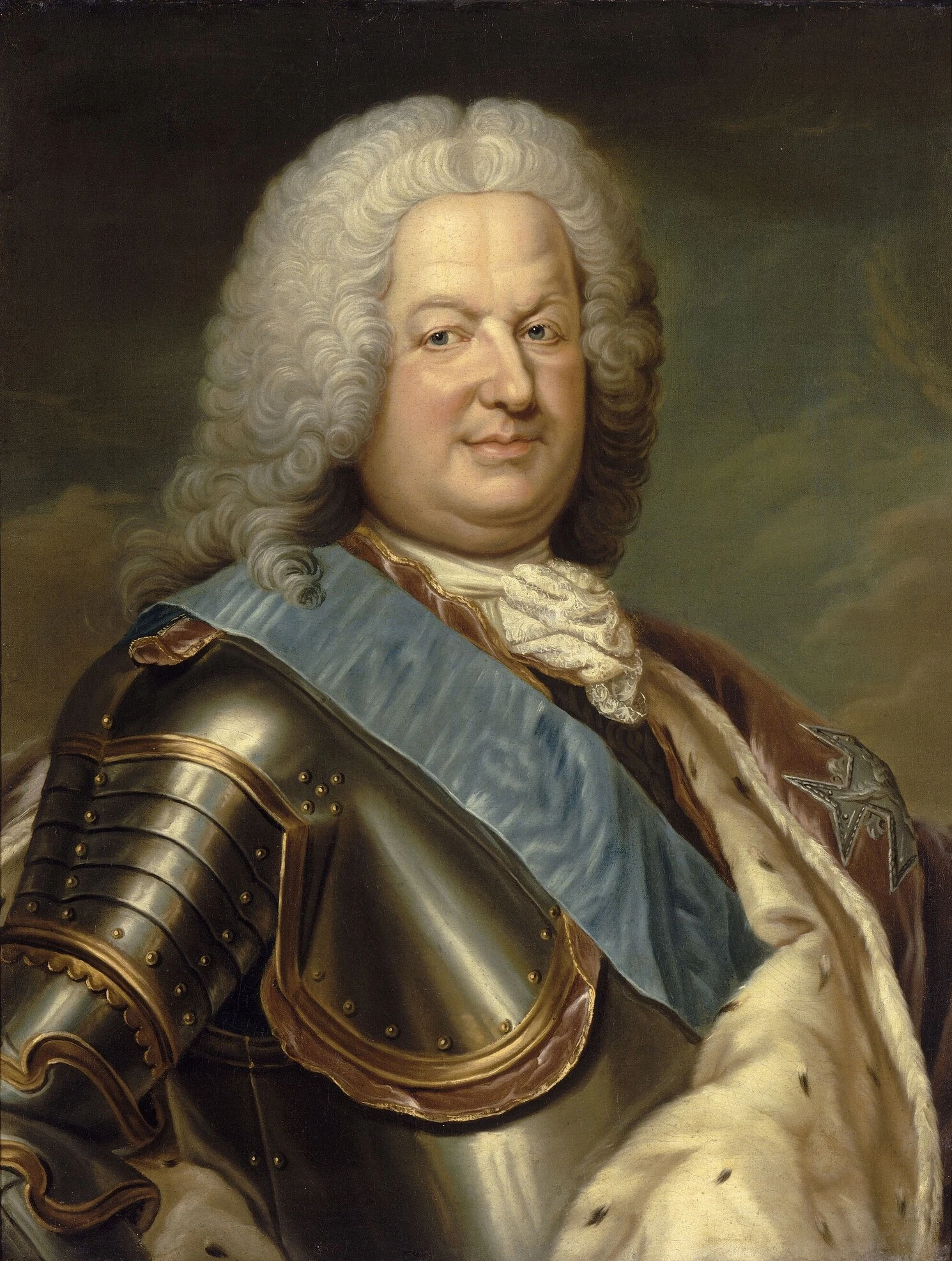
Stanisław Leszczyński. Par Girardet.
In February 1766, Stanislas is very old. He is more than 88 years old and very weak. He can't see (and he insists on fishing, so as the king can't see, his servants dive into the river to catch fish themselves, since the king can't see them, and he will believe until his death that he is an excellent fisherman!) On this winter day, he is sitting by his fireplace, wearing the beautiful robe that his daughter, Marie, Queen of France, had sent him from Versailles. As he leans over the fireplace to grab an ember to rekindle his pipe, he doesn't see that his robe is too close to the hearth. It caught fire. Getting up and trying to extinguish the fire that was setting his robe on fire, the king got up and ended up falling... In the fireplace. He will be found only a long time later, nobody having heard him, and his faithful servant being absent for the only time in years (he will never recover). After a week of suffering, Stanislas dies, not without a last humorous line, since looking at his mistress and her burns, he said "madam! Did I have to burn with such a fire for you? He rests in the Church of Notre Dame de Bonsecours, in Nancy, which he had rebuilt for this purpose, near his wife Catherine Opalinska. At his death, the duchies of Lorraine and Bar became part of the French crown. Everything that Stanislas had done was destroyed by order of Louis XV, not only the small buildings but also the castles. The castle of Lunéville became a sort of huge barracks. The great curtain of History falls on the Court of Lunéville.
Le château de Lunéville au temps du régiment de cavalerie en 1839 / gravure gallica.fr
This did not ruin the city, which was able to rebound and live through the 19th century and the first half of the 20th century with great wealth, since Lunéville was both a sub-prefecture, a place of manufacturing (earthenware in Lunéville Saint Clément, beaded embroidery...) and industry, since it was there that the first French cars, the Lorraine Dietrich, were manufactured.
Stanislas the greedy king
Stanislaus was very greedy. Contemporaries tell us that he ate very fast, like a glutton, which was not good for his visitors, who had to eat as fast as he did, because they could not continue to eat after the king, the table was cleared by the valets. He was particularly fond of melon, and was the originator of the "Lunéville melon", a rather large melon, close to the watermelon, which was cultivated for a long time on a large scale in Lunéville and of which he frequently suffered from indigestion. He was very fond of meat broth, which he ate for breakfast. And we owe at least two beautiful French specialties to Stanislas: the madeleine and the baba au rhum.
The madeleine
To know everything about the madeleine and its amazing history, and to discover recipes it is here :
The Rum-baba
Stanislas came up with the idea of baba. We tell you the story and give you the recipe below
Geo Web Info
Lunéville is home to a little more than 21,000 people. The city is also nicknamed "the cavalry city" because of the many horse regiments that were stationed there in the past. It is a sub-prefecture of the Meurthe-et-Moselle department, in the historical region of Lorraine, administrative region of the Grand Est.
By road :
Lunéville is located at about 30 kms from Nancy, or 20 minutes by car. It is located at 1H30 from Luxembourg, 1H30 from Strasbourg and a little more than 4H from Paris, via the N4 (not paying), it is a little longer by the A4 or the A31 (paying).
By train :
The station is 15 minutes from Nancy by train. It is also a TGV station, it puts you at 2H05 from Paris East.
By air :
The nearest airport is Metz Nancy Lorraine airport, in Goin, a little less than an hour from Lunéville. The other one is located in Luxembourg, a little less than 2 hours away.
The websites
To discover the tourism in Lunéville and in the Lunévillois area, it is here
To discover the tourism in Meurthe-Et-Moselle it is here.
Tourism in the Grand Est region is explore Grand Est is this way.

